Most indoor growers encounter some elusive plant growth issues, such as symptoms of nutrient deficiency, but in reality, the nutritional components are balanced and fresh. Sometimes, growers may find that plants grow slowly or develop powdery mildew, and even a series of unresolved environmental issues.
After research, it has been found that adjusting the Vapor Pressure Deficit (VPD) can create an ideal environment for weed growth. This is a cutting-edge concept in commercial planting that can take you to the next level. Once you understand and apply these concepts, your planting room environment will be significantly improved.
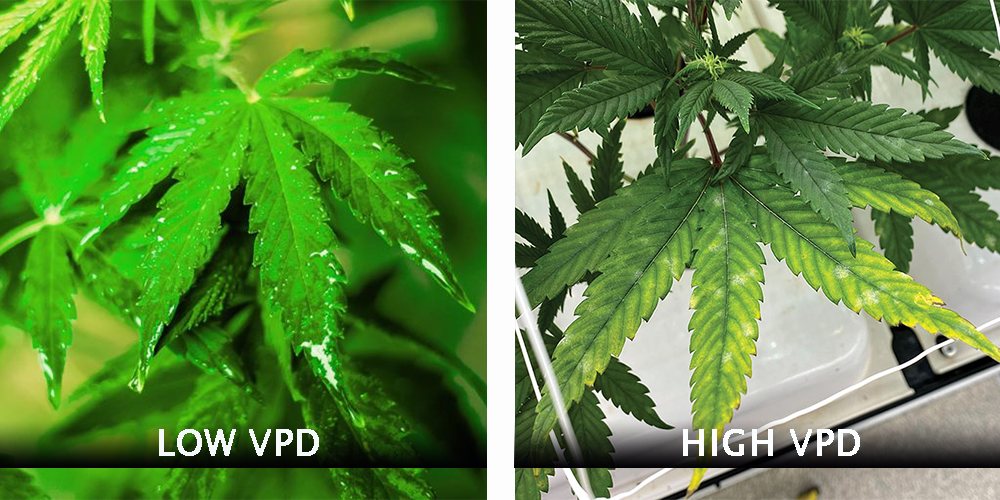
The Vapor Pressure Deficit measures the air's ability to dry plants. Essentially, it refers to how much water the atmosphere absorbs from plants.
As is well known, plant growth depends on transpiration. To be precise, if a plant cannot release water through its stomata, it will die. The transpiration process of plants is similar to the sweating process of our human body. The pores of plants are similar to those of the human body. But the biggest difference is that plant transpiration is to absorb more water through the roots, providing energy for photosynthesis.
When the Vapor Pressure Deficit is too high, plants may not be able to meet the environmental requirements for them. The air is drying out too quickly. This can lead to symptoms similar to nutrient deficiency and poor plant growth.
On the other hand, if the Vapor Pressure Deficit is too low, plants cannot evaporate. Water may accumulate on the leaves, greatly slowing down the growth rate of plants. If this situation is not controlled for a long time, plants may be invaded by molds and fungi, such as powdery mildew.
By reading about VPD related knowledge, you will see various vapor pressure measurements. For example, Saturated Vapor Pressure (SVP), Atmospheric Vapor Pressure Deficit (AVPD), Leaf Vapor Pressure Deficit (LVPD), and other values that are not worth mentioning.
The Vapor Pressure Deficit is the difference between the saturated vapor pressure (SVP) and relative humidity (RH). SVP refers to the maximum amount of water vapor that the atmosphere can hold at a specific temperature. RH refers to the amount of water vapor currently suspended in the air. Therefore, to calculate the VPD in a room, only two parameters need to be measured: temperature and relative humidity.
The perception of plants is slightly different because they are usually slightly lower than room temperature. If the temperature of the plant is exactly the same as room temperature, then the level of Saturated Vapor Pressure Deficit between the plant and room temperature is also the same. But this situation rarely happens! Normally, leaves are 3 to 5℉ (about 1.5 to 2.5℃) lower than room temperature because they are transpiration. The evaporation on the surface of the blade actually absorbs the heat of the blade, thereby cooling it.
We call it Leaf Water Vapor Pressure Deficit (LVPD), and with just one measurement, we can calculate the result, which is the leaf temperature of the plant. To measure this temperature, we used infrared thermometers (IR thermometers), which are quite cheap and sell for less than $30 on Amazon. It is very easy to measure the temperature of anything with an infrared thermometer, such as ballasts and reflectors. So, if you were like us, you would start using it to measure all objects within your line of sight.
According to the temperature difference between plant temperature and room temperature, the water Vapor Pressure Deficit table that needs to be referred to is different. The following is a table of water Vapor Pressure Deficits that can be used for temperature differences of 0 degrees Celsius, 1℉, 2℉, 3℉, 4℉, and 5℉. These will help you maintain optimal humidity and temperature levels in the growth chamber at every stage of the plant.
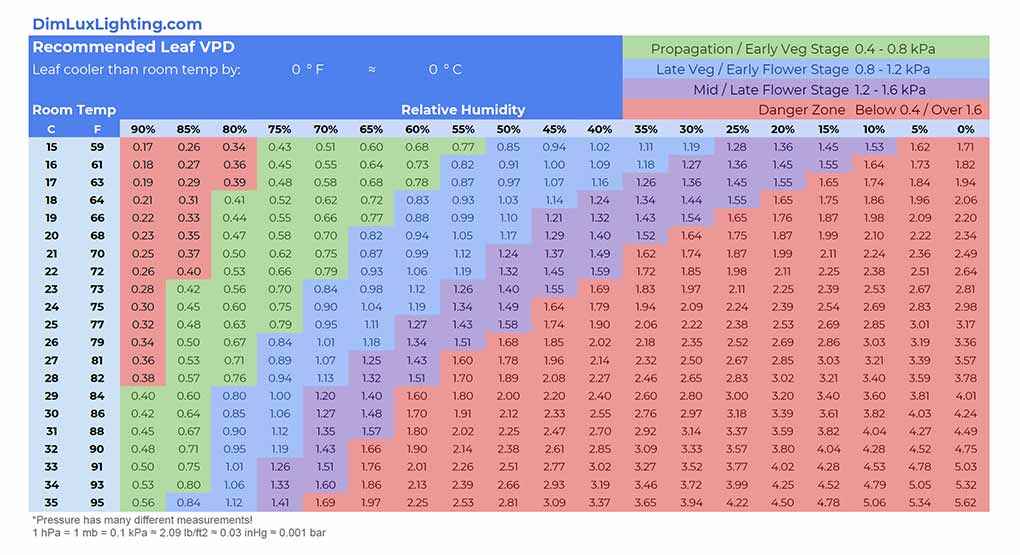

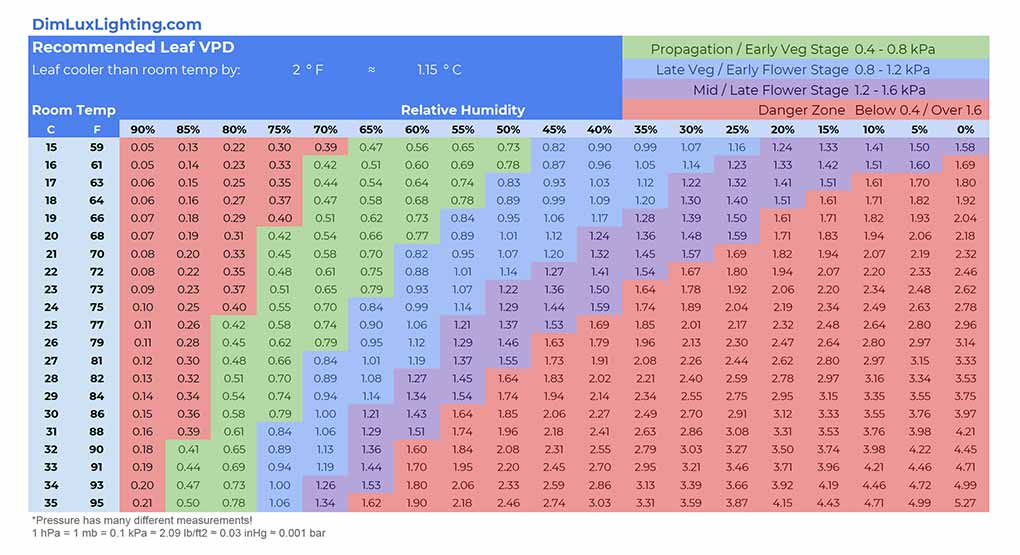


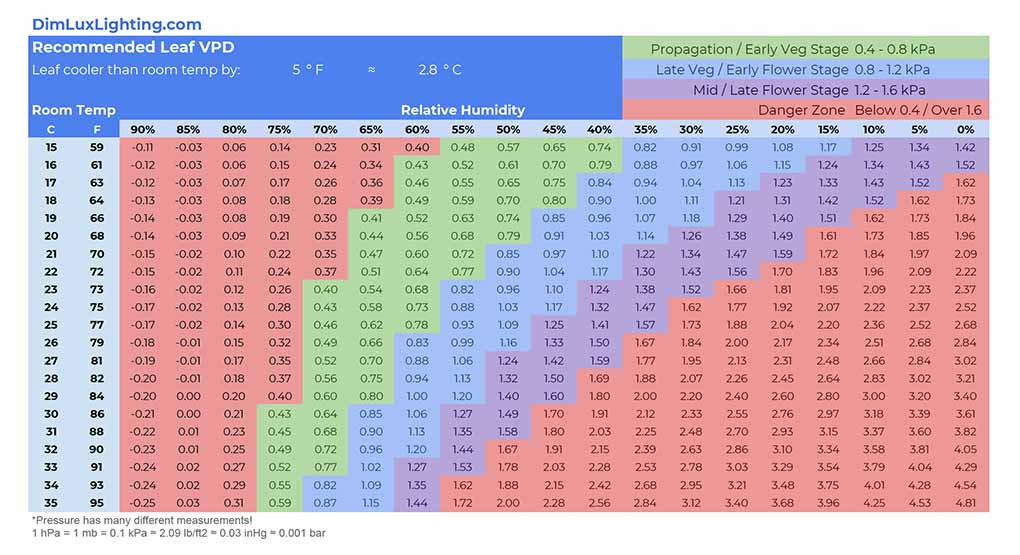
Seedmax grow room dehumidifiers are specially designed for grow rooms, grow tents, and greenhouses. The commercial mobile dehumidifiers can be moved, controled, and drained easily. The ceiling mounted dehumidifiers need installing on the ceiling/wall, which saves the ground space. Our PRO500 dehumidifier supports Modbus control.
If you are a commercial grower, please contact us for suggestions.
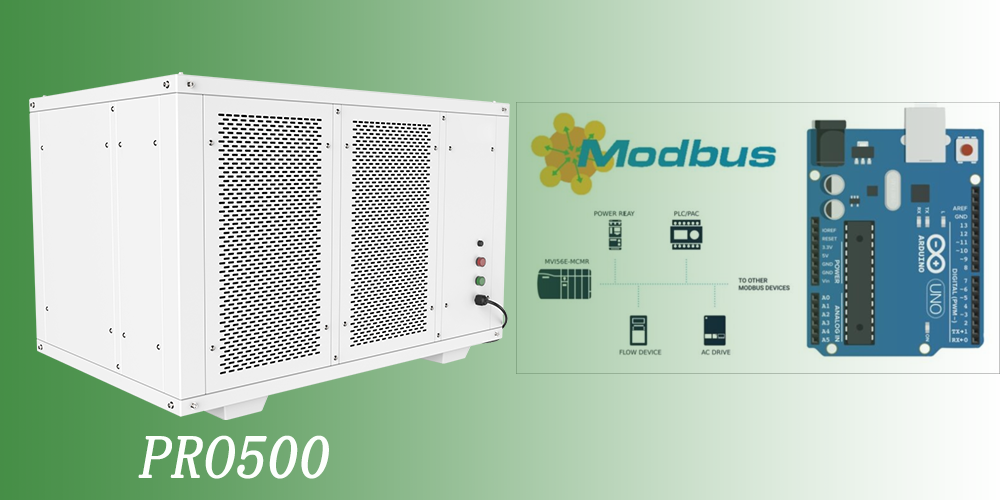
Prev:How to Lower Humidity in Grow Tent While Drying?
Next:none